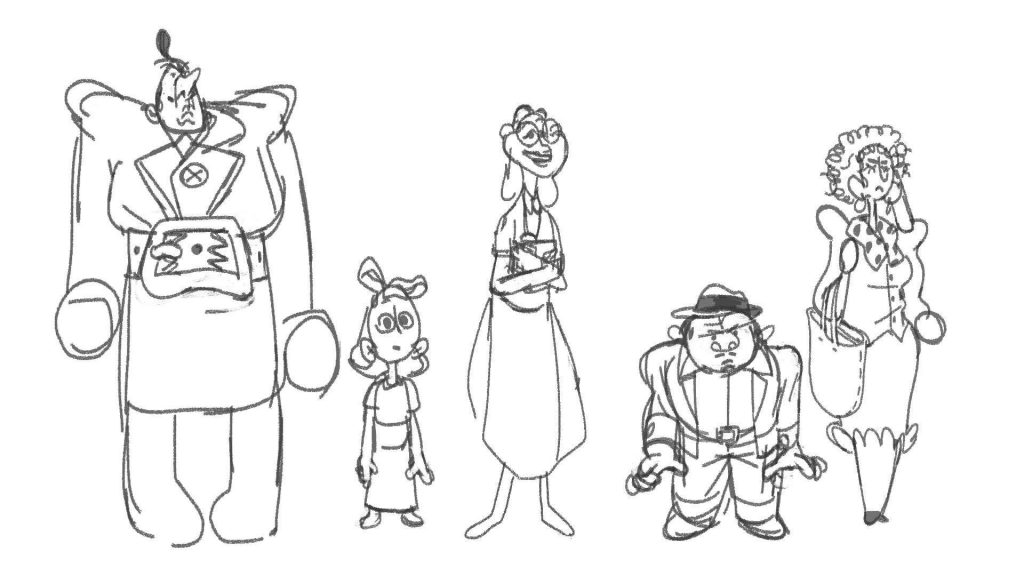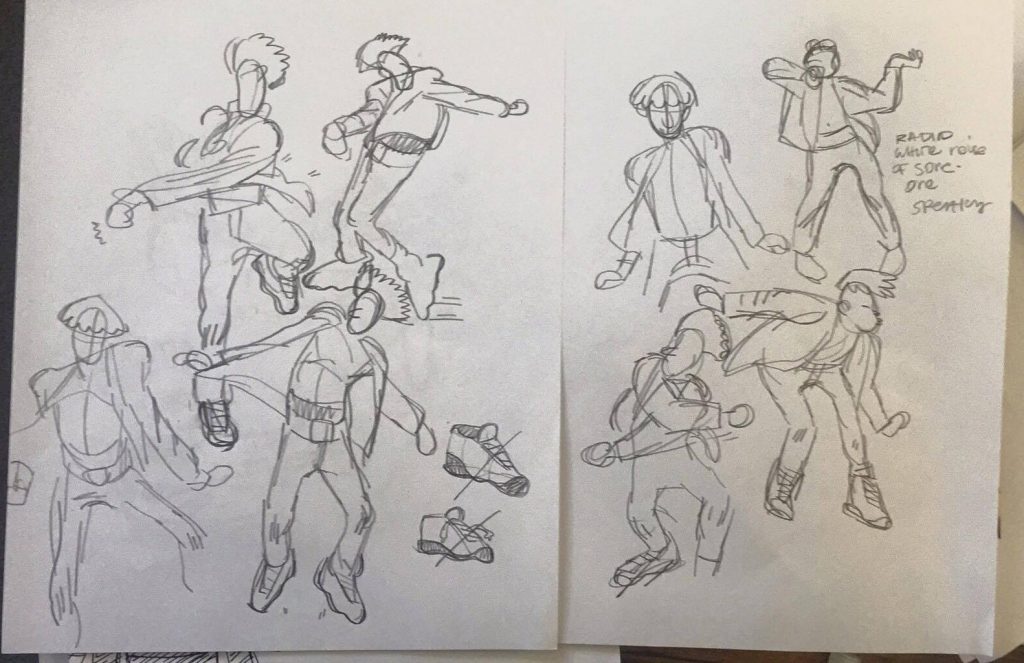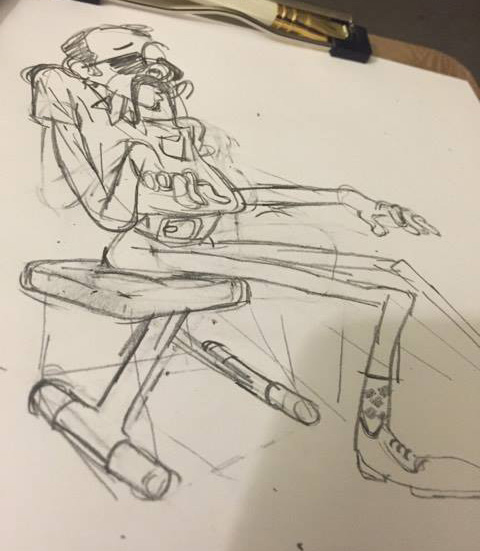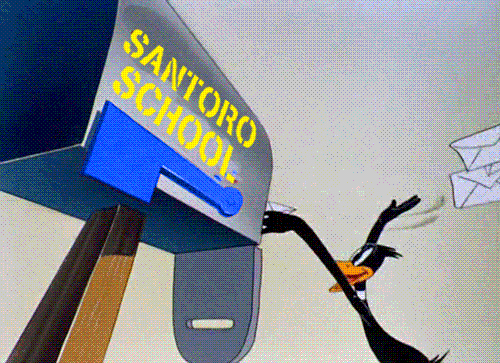Today we have thoughts from Tyler Landry on the recent work-in-progress of Cameron Weston Nicholson, and Sam Ombiri’s response to this with further exploration of the act of sketching and process work – plus other news items from the week.
—————————————————————————————————
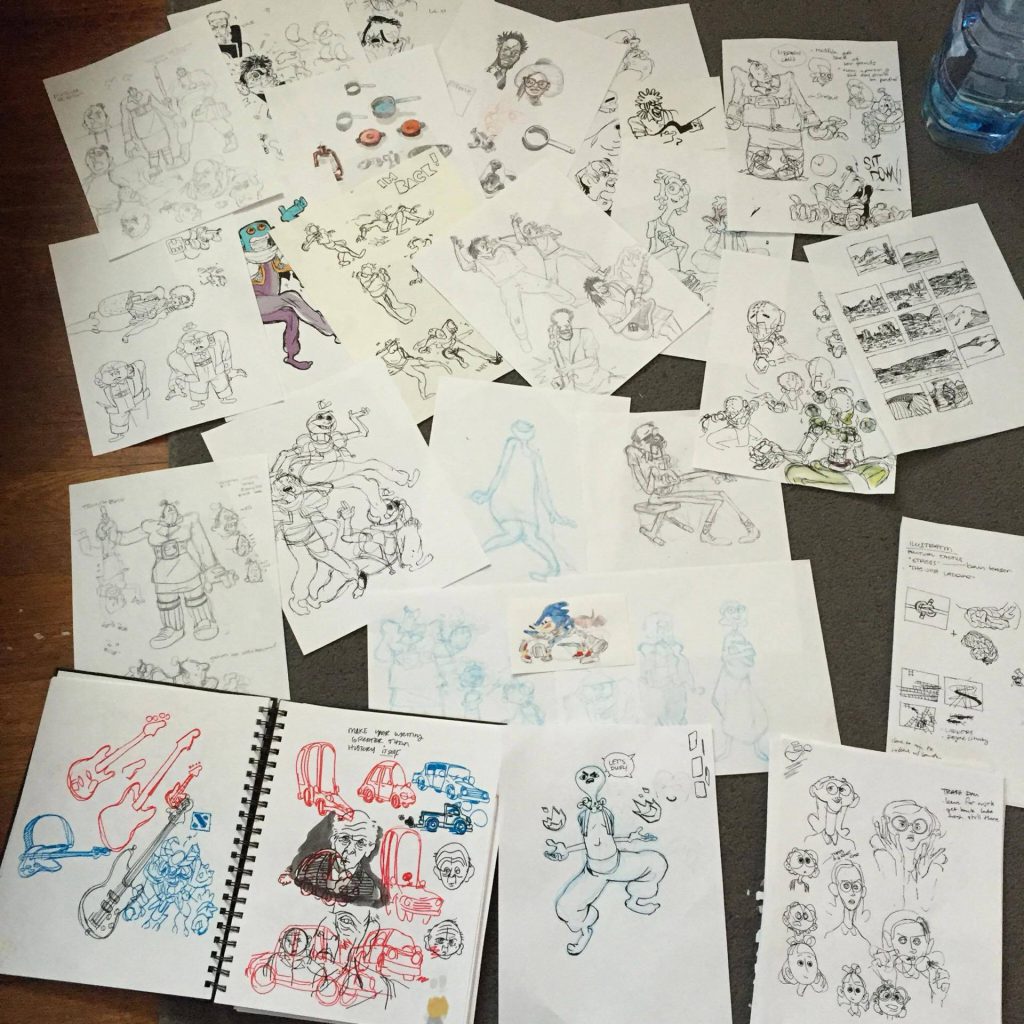
Tyler Landry here. I’ve been following some of Cameron Weston Nicholson’s semi-secret endeavors over the last week or two, and the man is ON FIRE! Several simultaneous streams of intense character development are taking place here – some involving characters you might recognize from a certain book/film about a peculiar little girl who’s looking for her place in the world, while some are brand new, straight from Cam’s brain-swamp. The latter are the first manifestations of a new comic he’s got in the works. Sssshhhhhh…
There is a sincere (and successful) attempt here to accentuate each character’s unique physicality which, for me, helps to telegraph their personalities directly into their appearance. Think of it like exaggerated facial expressions – for the whole body.
This next set of character poses is as much about movement as it is about base structure. In this case, what they do outwardly speaks volumes about what’s going on inside.
Combined, the physical form and the gestures amount to much of what’s required for these characters to communicate who they are.
What Cameron’s been doing here is the beginning of world-building for a story. Be it in comics, film/tv, a novel, or a video game, steps like these towards developing characters and, by extension, the world they inhabit, are essential. Cam’s really feeling these guys out, trying to understand what makes ‘em tick, how they dress, how they act, how they go about their business in the world he’s going to place them in. Just like any exercise in copying the masters, there’s a wealth of information to be gleaned from retracing the steps of your predecessors on the way to (or alongside) taking your own. – Tyler Landry
Follow Cameron Weston Nicholson‘s Instagram to keep up with more of his process work – @prof_weston
Watch the video of Cameron’s Comics Workbook-hosted workshop at SPX 2016 HERE.
We have presented this Feature in full, but you can also read it HERE on the site, and check out more links to Cameron and Tyler Landry’s work.
What follows is Sam Ombiri’s response to the above piece about Cameron’s work.
—————————————————————————————————
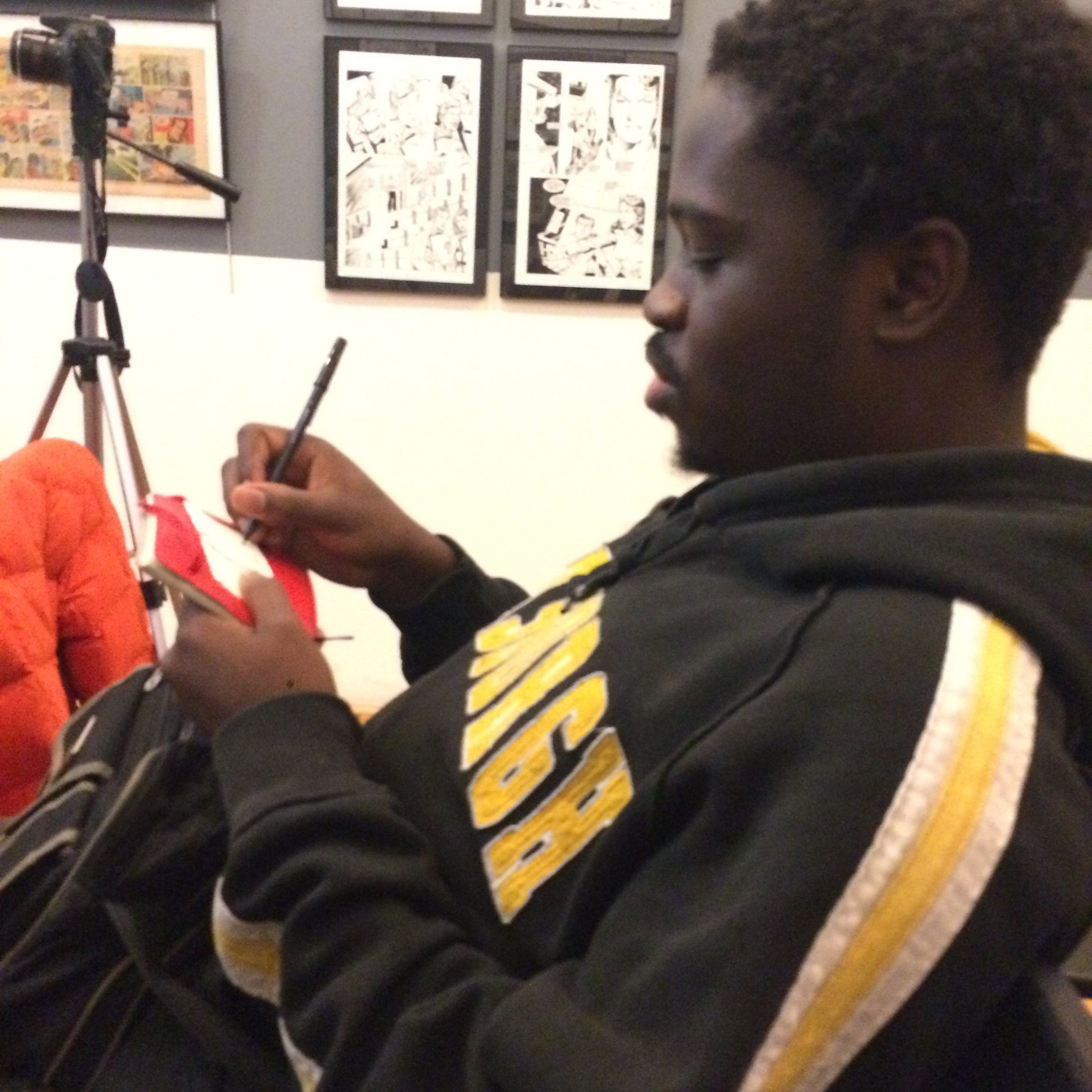
Sam Ombiri here. Gary Panter said something like sketchbooks are your friend – sometimes you hide an idea in there and you find it later when you need it (I think that’s what he said). CF said he likes to think of a sketchbook or blank page as an experimental plane.
Mieko Kawakami said that for her, sketching (she actually said poetry – but it’s in a different cultural context, which unless you avidly read contemporary Japanese literature in Japanese, and keep up to date with the trends in relation to the history of Western influence on Japanese poetry, mixing with the more traditional Japanese poetry, then going back to a mix of traditional and Western influence and just what’s hot in the scene right now…you’d get it – not that I know anything about all that, I just heard it somewhere). Anyway for Mieko Kawakami “sketching” is like delusion and the “final draft” (she actually said prose) is like imagination. I kinda partly disagree with this illustration. I don’t think – with my ignorance of what’s going on with Japanese poetry right now – work of that kind is pure delusion, but it is emotion tapered with structure at least for the time being (though there’s still structure at play, as shown in Cameron Weston Nicholson’s work – see above – but there’s room for expression created here. Or maybe it’s just one’s personal fears and reservations.)
CF said something like the best way to draw is to turn your back on everyone you know and your ideals – at least I think that’s what he said. Japanese poetry is really preoccupied with rhythm, so even with the “delusion” it’s still grounded in something. Mieko Kawakami said the delusion she was referring to was like how she could have a family live in a house made out of pancakes – but ironically when she’s referring to her imagination she feels she can’t do that.
It makes me wonder – why make novels that limit yourself if they are a “higher calling”? From my understanding, for awhile the attitude readers had for novels in Japan were: the more difficult the better. I’m not sure whether it was The Tale of Genji or Don Quixote that was the first novel, but I think it’s safe to say the novelists most likely have a strong sense of tradition strictly built on the foundation that The Tale of Genji set up (I’m only assuming). So then, maybe that strong sense of tradition is what drives Kawakami to limit herself. That doesn’t really make any sense though, because a lot of the more popular contemporary Japanese authors, at least popular outside of Japan, have been influenced by novels outside the Japanese tradition. I think she cited Virginia Woolf as a big influence.
Someone said that the current movement is a fusion of the old difficult traditional Japanese literature and the new fun Japanese literature. Maybe in delusion/sketching/experimentation there’s a lack of tampering (which isn’t always the case). The only tampering to be found in imagination or in the work is in one’s limitations (sometimes).
Ambiguity is subtracted so there’s a more possible chance of connection, but connection can happen either way. Sketches/process work is the most honest/real documentation. It doesn’t always show up in apparent ways in all works but sometimes it shows up in the final work, which usually rocks. I like to be reminded when I’m looking at a drawing that it’s a drawing made by a person who isn’t always graceful. – Sam Ombiri
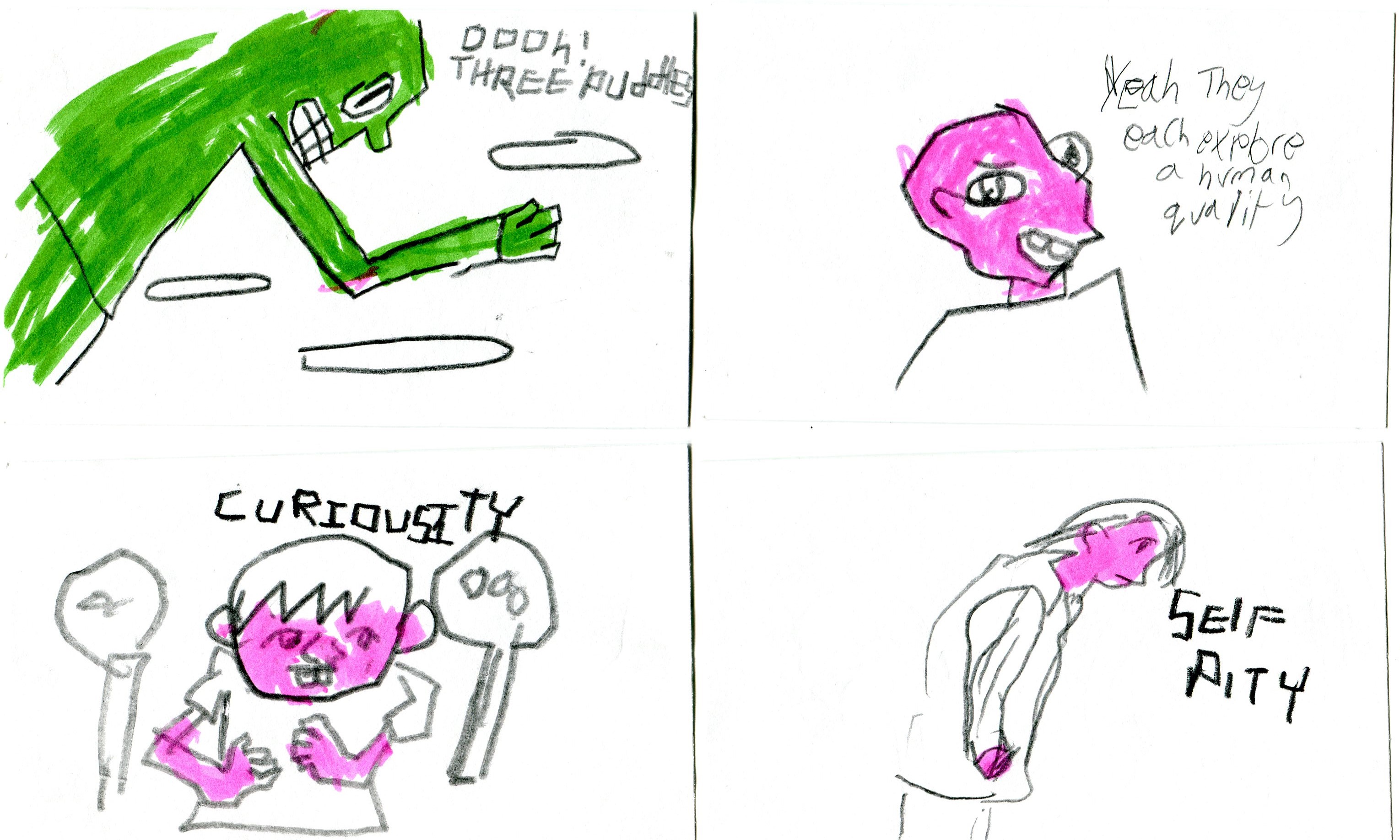
—————————————————————————————————
A few other news items for the day:
Ben Passmore has a comic up on The Nib this week about getting arrested for protesting the KKK – check it out HERE.

—————————————————————————————————
The New Yorker ran a piece last week about the “Hidden Black Female Figures of Western Art” that is well worth a read. An excerpt:
“What began as a small experiment expanded into the history of art in the entire Western world. The museums were invisible graveyards. They were just sitting there: broken, defaced, unseen. A catalogue of bodies.
It was an invisible archaeology—an archaeology that crisscrossed time and space. Everywhere I went, I found them, just off, just to the edge, just beneath: pieces of black female bodies buried in plain sight. A small black female carved into the handle of a tool. Miniature black women who could fit into your palm. A three-inch-long black female carved into a knife handle, so you could hold on to her body tightly whenever you sliced your daily bread. A palm-sized black woman in your hand when you brushed your hair at night, looking absently into the mirror. A spoon handle, a drum, a hammer, a flute—black bodies sculpted into the wooden frame surrounding a heroic painting of a white male on top of a white horse, riding triumphantly into war. Black female bodies ornamenting the tripods, the base of a table, sleeping inside the frame, selling, offering, tending in the background of innumerable paintings. Bending, standing, waiting. Our whole artistic history crawling with the decorative bodies of black women.” – Robin Coste Lewis for The New Yorker
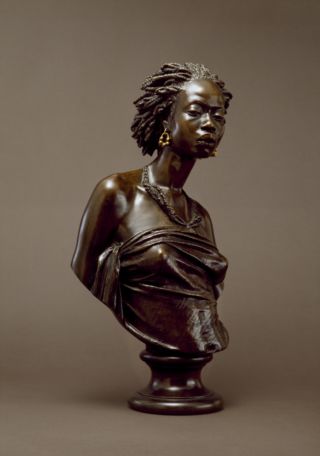
Read the rest of the article HERE.
—————————————————————————————————
Robin McConnell has a massive Cartoon Crossroads Columbus report up on the Inkstuds site – check it out HERE.
—————————————————————————————————
Matthew Thurber‘s comics have been adapted into the play 1-800-MICE, being put on by the Baltimore Annex Theater – info and tickets HERE.
—————————————————————————————————
Comics Workbook has announced the Winter Semester of the Santoro Correspondence Course for Comic Book Makers – course starts Dec. 29th 2016!
8 week course – 500 bux – 10 spots available – apply by Dec. 13th 2016 and get $100 off course fee!
More details can be found HERE – or email santoroschoolATgmail.
Santoro School Application guidelines:
-3 figure drawings done on blank 3 x 5 index cards
-3 landscape drawings done on blank 3 x 5 index cards
-3 still life drawings done on blank 3 x 5 cards
-draw in a contour line style – Think Matisse – no under-drawing – draw directly in ink
-just send small jpgs of images – dont post to your blog pls
-specific url links to any comics work you have done.
Send applications to: santoroschoolATgmail
